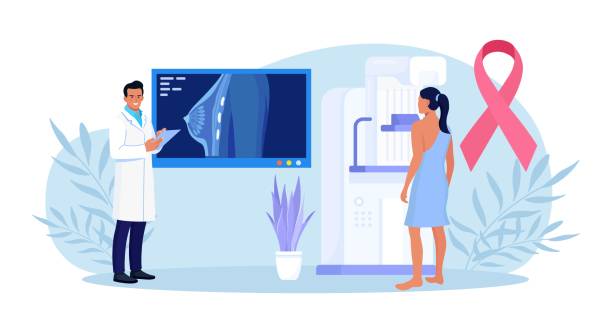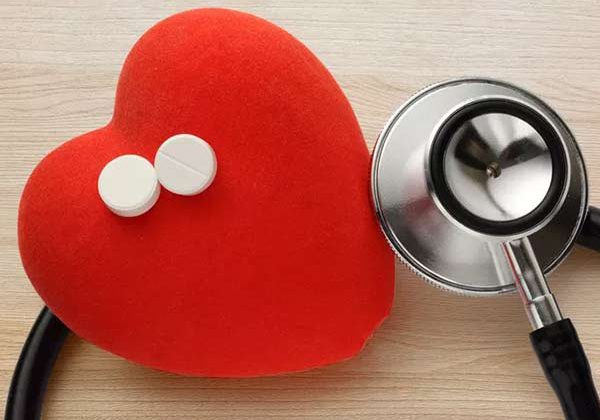AI can identify women with high risk of breast cancer in screening examinations
The use of AI makes it possible for women with a high risk of breast cancer to be identified in mammography screening examinations so that the cancer can be caught earlier. An international research group led from Karolinska Institutet in Sweden can now show that the method is effective in different European countries. The study is published in The Lancet Regional Health – Europe.
An AI-based risk model for evaluating mammographic images is able to identify women with a high risk of breast cancer who might need complementary examinations to improve the possibility of early detection. After testing the method on over 8,500 women in Italy, Spain and Germany, the researchers can now show that the model works well in the different populations.
In current mammography programmes, women are screened over a fixed age (40–74 years old in Sweden) and time interval, often every other year. However, research has shown that the risk of developing breast cancer varies, which means that women would benefit from individualised screening by obtaining a better idea of their personal risk. Risk models have existed for decades and are often based on a woman’s family history of breast cancer and lifestyle factors.
AI detects tiny changes
By letting a trained AI examine screening images, researchers have developed an entirely new type of risk model based on tiny changes in the images that are far too small for the human eye to register.
“It’s not as simple as traditional models that use a handful of factors such as genes, as there are thousands of factors in the image that are taken into account,” explains study leader Mikael Eriksson, postdoc researcher at the Department of Medical Epidemiology and Biostatistics, Karolinska Institutet. “The AI is able to find different patterns in these factors, each of which are weak but that the AI can combine. The AI can also give an overall assessment of what is likely to happen in the breast in the future.”
At present, a large number of women are diagnosed at a late stage and can even develop breast cancer between screenings. The AI-based risk model can be used to determine which women need additional examination as a complement to their normal mammography, so that any tumours can be detected earlier. The current study confirms earlier reports in which the AI-based risk model was able to identify a group of women who had almost seven times the risk of developing breast cancer as the normal population.
Individualised screening
“Although about six per cent of the women were high-risk, they are screened today in the same way as low-risk women,” says Dr Eriksson. “We think that a specially adapted screening could be more suitable for these women.”
However, the purpose of this study was not to look at clinical use per se but to examine if the method, which had already been evaluated in Sweden and the USA, also works in different mammography programmes around Europe.
“First you develop the model and test it in a slightly more limited population, and then you go on to demonstrate generalisability in other populations, after which you reach a point where you believe that the model works,” he continues.
The next phase of the research is to conduct a clinical study in Europe in which women are tested when screened and given different treatments depending on the risk value that the AI model gives them. This method was clinically evaluated in the USA several years ago.
“We’re now looking at the possibility of introducing the model in Europe,” says Dr Eriksson.
The study was financed by the Swedish Research Council and the Swedish Breast Cancer Association. Mikael Eriksson holds a patent for an image-based risk model for breast cancer licensed to the US company iCAD, Nashua, NH.
Facts: The mammograph images used in the study were taken between 2009 and 2020 from over 8,500 women in Italy, Spain and Germany. During the follow-up period, 739 of these women developed breast cancer. The AI-based risk model analysed the first images in their screening programme without data on which women went on to develop breast cancer. In total, 6.2 per cent of the women were classified as high-risk cases, 4.7 per cent of whom were in the group that did not develop breast cancer and 22 per cent in the group that did. The study demonstrates that women who had been classified as high-risk had almost seven times the risk of developing breast cancer compared with the normal population. Source: Mikael Eriksson
Full bibliographic information
Published on 06/12/2023 by Karolinska Institutet
Publication: “European validation of an image-derived AI-based short-term risk model for individualized breast cancer screening – a nested case-control study”
By: Mikael Eriksson, Marta Román, Axel Gräwingholt, Xavier Castells, Andrea Nitrosi, Pierpaolo Payyacini, Sylvia Heywang-Köbrunner, Paolo G. Rossi. The Lancet Regional Health – Europe, online 6 December 2023
DOI: https://doi.org/10.1016/j.lanepe.2023.100798





